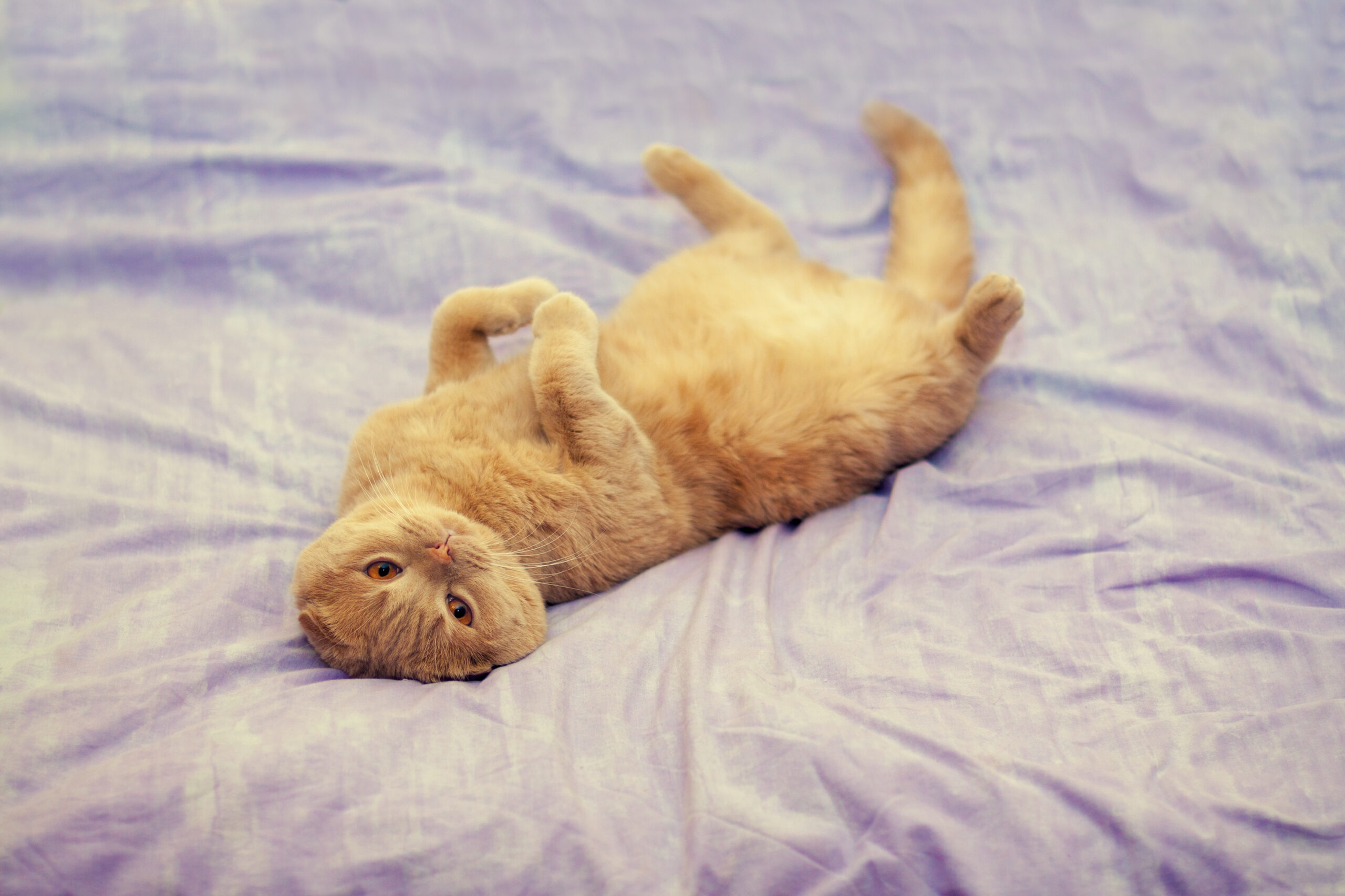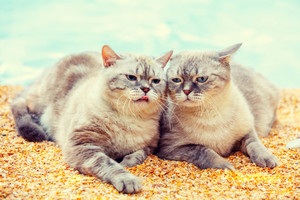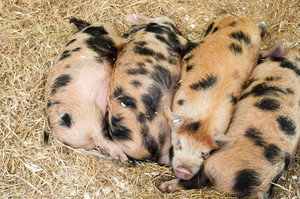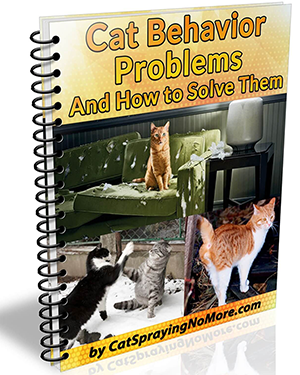Cats
The Best Litter Box for Your Feline Friend: A Buyer’s Guide
Introduction to the Best Litter Box for Your Feline Friend: A Buyer’s Guide
Cats are one of the most popular pets in households around the world. They bring joy, love and companionship into our lives. However, taking care of a cat also comes with responsibilities such as providing them with food, shelter, exercise, grooming, and proper sanitation. One important aspect of maintaining your feline friend’s health is by choosing the right litter box. In this article, we will guide you through everything you need to know about selecting the best litter box for your cat.
The Importance of Choosing the Right Litter Box
Choosing the correct litter box can make all the difference when it comes to keeping your home clean and odor-free while ensuring that your cat has an appropriate place to do their business. The wrong type or size of litter box may result in accidents outside of the box, which can be frustrating for both you and your pet. Additionally, if the litter box is not kept clean regularly, it can lead to health problems for your cat. Therefore, it is essential to choose a litter box that suits your cat’s needs and preferences.
Types of Litter Boxes and Their Features
There are several types of litter boxes available on the market today. Each type has its unique features, advantages, and disadvantages. Here are some common types of litter boxes:
1. Traditional Open Top Litter Boxes – These are the most basic type of litter boxes and come in various sizes and shapes. They have an open top design, which makes them easy to access and clean.
2. Covered Litter Boxes – As the name suggests, these litter boxes have a lid or cover that helps contain the smell and mess. They come in different styles, including hooded and domed designs.
3. Self Cleaning Litter Boxes – These litter boxes use technology to automatically rake waste away from the litter and dispose of it. Some models even flush the waste like a toilet.
4. Sifting Litter Boxes – These litter boxes have a sifter at the bottom that separates clumps from the rest of the litter. This feature allows you to remove only the soiled litter, making it easier to keep the box cleaner.
5. Multiple Cat Litter Boxes – If you have more than one cat, you may want to consider getting multiple litter boxes. It is recommended to provide one litter box per cat plus one extra.
Top 5 Recommended Litter Boxes for Cats
Now that you understand the different types of litter boxes available, let us take a look at five highly recommended options for cats:
1. PetSafe ScoopFree Ultra Automatic Self Cleaning Cat Litter Box
This self-cleaning litter box uses disposable cartridges that last up to three weeks before they need replacing. It cleans itself after every use, leaving behind fresh, clean litter for your cat.
2. PetSafe Simply Clean Hooded Cat Litter Pan
If you prefer a traditional open top litter box, then this option might be perfect for you. Its large size accommodates larger cats comfortably, and the high sides help prevent spills and tracking.
3. Nature’s Miracle Dual Chamber Corner Litter System
For homes with limited space, this corner litter system is ideal. It has two chambers, each with its own entrance, allowing you to separate male and female cats or just give your cat more privacy.
4. Omega Paw Roll’n Clean Self Cleaning Litter Tray
Unlike other automatic litter boxes, this model does not require electricity or batteries. Instead, it relies on a rolling mechanism that pushes waste into a removable tray for easy disposal.
5. Modkat XL Modern Litter Box
Designed with style and functionality in mind, this modern litter box looks sleek and stylish in any room. Its tall walls help reduce litter scatter and provide ample coverage for larger cats.

Conclusion: Making an Informed Decision
Selecting the best litter box for your cat requires careful consideration of factors such as your cat’s age, size, habits, and personal preference. You should also think about how often you plan to scoop the litter, whether you prefer automated or manual cleaning, and the amount of space available in your home. By considering these factors and evaluating the pros and cons of each type of litter box, you can make an informed decision that keeps everyone happy and healthy.
Need a guide on how to keep your cat going in there little box check out this article
Why a Scratching Post is Essential for Your Cat’s Health, and How to Find the Perfect One
Cats are fascinating creatures that bring joy and love into our lives. They have unique personalities, quirks, and behaviors that make them so special. However, as cat owners, it’s essential to provide them with everything they need to thrive. One of the most important things you can do for your feline friend is to give them a scratching post. In this article, we will explore why a scratching post is crucial for your cat’s health, how to choose the perfect one, common mistakes people make when buying a scratching post, and the benefits of providing your cat with a scratching post.
Introduction to Scratching Posts and Their Importance
Scratching posts are an excellent way to keep your cat entertained while also fulfilling their natural instincts. Cats have sharp claws that they use for hunting, climbing, and self-defense. When they don’t have anything to scratch, they may turn to furniture or other household items, which can lead to damage and costly repairs. A scratching post provides a safe outlet for your cat to sharpen their claws, stretch their muscles, and mark their territory. It helps prevent boredom and anxiety, which can lead to destructive behavior. Additionally, scratching releases stress hormones, helping your cat relax and unwind after a long day.
How to Choose the Perfect Scratching Post for Your Cat’s Needs
Choosing the right scratching post requires some research and consideration. First, think about your cat’s size and weight. You want to ensure that the post is sturdy enough to support them without tipping over. The height of the post should be at least 16 inches high, allowing your cat to fully extend their body while scratching. Consider the texture of the surface; cats prefer rougher surfaces like sisal rope or carpet. Look for materials that won’t shed or come apart easily, causing potential hazards. Finally, consider the design and shape of the post. Some cats prefer vertical posts, while others enjoy horizontal ones. Experiment with different styles until you find what works best for your furry friend.
Common Mistakes People Make When Buying a Scratching Post
One mistake people often make when purchasing a scratching post is not considering their cat’s needs. For example, if you have a large breed cat, you’ll need a sturdier post than someone who has a smaller cat. Another mistake is choosing a post made from inferior materials that could harm your cat or break down quickly. Also, avoid choosing a post that is too small or narrow, as it might not provide adequate support during scratching. Lastly, don’t forget to place the scratching post in a prominent location where your cat can see it and access it easily.
The Benefits of Providing Your Cat with a Scratching Post
Aside from keeping your home safe from destruction, there are many benefits to providing your cat with a scratching post. As mentioned earlier, it helps satisfy your cat’s natural urges to scratch and climb. It also encourages exercise and playtime, reducing boredom and promoting physical activity. Additionally, having a designated scratching area reduces the likelihood of your cat using their claws on humans or other pets. Overall, investing in a quality scratching post is an essential part of responsible pet ownership.
In conclusion, providing your cat with a scratching post isn’t just good for your home but great for your cat’s overall wellbeing. By following these tips, you can find the perfect scratching post for your cat’s specific needs and help them live happily and healthy.
Cat Trees vs Scratching Poles: Which is Better for Your Pet
Cats are fascinating creatures that require a lot of attention and care. One crucial aspect of keeping your cat healthy is providing them with the right kind of exercise, which can help prevent obesity, boredom, and other behavioral issues. In this article, we will explore two popular options for exercising cats: cat trees vs scratching poles.

Introduction to Cat Trees vs Scratching Poles
Cat trees are tall structures made up of platforms, ramps, and perches that allow cats to climb, jump, and play. They come in various shapes and sizes, and some even have toys or balls attached to keep kitties entertained. On the other hand, scratching poles are vertical posts covered in sisal rope or carpet material that provide cats with an area to sharpen their claws and stretch their muscles. Both options offer unique benefits and drawbacks, so let’s take a closer look at each one.
The Importance of Exercise for Cats
Exercising your cat regularly helps maintain a healthy weight, improves joint flexibility, reduces stress levels, and prevents boredom-related behaviors such as excessive meowing or destructive scratching. A lack of physical activity can lead to obesity, which puts your pet at risk of developing diabetes, arthritis, and heart disease. Therefore, it’s essential to provide your feline friend with opportunities to move around and stay active.
How to Choose the Best Cat Tree or Scratching Pole
When selecting a cat tree or scratching pole, there are several factors to consider. Firstly, measure the size of your space and choose a structure that fits comfortably without taking up too much room. Secondly, think about your cat’s personality and preferences. Some cats love heights and enjoy lounging on elevated surfaces, while others prefer low-lying areas where they can hide or observe their surroundings. Thirdly, consider the materials used in construction. Look for sturdy structures made from durable materials like wood or metal, and avoid flimsy plastic products that could break easily. Finally, check for safety features such as non-skid bases or secure attachment points to prevent accidents.
Comparing the Benefits of Each Option
Let’s start by looking at the advantages of cat trees. These structures offer multiple levels and platforms for cats to climb and explore, promoting mental stimulation and physical activity. Many models also include toys or balls to engage kitties and encourage playtime. Additionally, cat trees can be placed near windows or doors, giving cats a bird’s eye view of their surroundings and reducing anxiety caused by separation. However, cat trees may not be ideal for households with small children who might accidentally knock over the structure or disturb sleeping pets.
On the other hand, scratching poles offer specific benefits as well. Unlike cat trees, these structures are typically more compact and easier to store, making them perfect for smaller spaces. They also provide cats with a designated area to scratch, helping prevent damage to furniture or walls. Moreover, scratching poles often feature different textures and angles, allowing cats to work out different parts of their bodies and improve overall agility. Nonetheless, some cats may find scratching poles limiting since they only offer one type of exercise.
Common Mistakes to Avoid When Buying a Cat Tree or Scratching Pole
One common mistake people make when purchasing cat trees or scratching poles is choosing poor quality products. Cheaply made items tend to fall apart quickly, putting both your pet and household decor at risk. Another error is buying structures that don’t match your cat’s needs or preferences. For example, if you own a senior cat with mobility problems, a high-level cat tree might not be suitable. Lastly, failing to supervise your cat during playtime can result in injuries or accidents. Always monitor your pet while using any new equipment and address any concerns promptly.
Conclusion: Which is Better for Your Pet?
Ultimately, whether you should opt for a cat tree or scratching pole depends on your individual circumstances. If you have limited space but still want to give your cat plenty of opportunity to climb and play, then a scratching pole might be best. However, if you prioritize mental stimulation and physical activity, then a cat tree would likely be better suited for your furry companion. Remember to always consult with your veterinarian before introducing any new equipment into your home and ensure that all products meet industry standards for safety and quality.
How to Communicate with Your Cat: A Guide for Pet Owners
Introduction to Cat Communication:
Cats are known for being mysterious and independent creatures, but they actually have a lot to say if we know how to listen. Understanding your cat’s communication style is essential for building a strong bond with them and providing them with the care they need. In this guide, we will explore different ways cats communicate and provide tips on how you can better understand their needs.
Understanding Your Cat’s Body Language:
One of the most important aspects of communicating with your cat is understanding their body language. Cats use a combination of vocalizations, facial expressions, and physical movements to convey their emotions and needs. For example, when a cat purrs, it usually means that they are content and happy. However, not all sounds are positive. A hissing or growling cat may be feeling threatened or agitated. Similarly, a relaxed posture with half-closed eyes indicates that your cat is comfortable, while a tense body and flattened ears could mean that they are anxious or fearful. By paying attention to these subtle cues, you can better understand what your cat is trying to tell you.
The Importance of Scratching Posts and Toys:
Another critical aspect of communicating with your cat is providing them with appropriate outlets for their natural behaviors. One of the most common issues faced by pet owners is scratching furniture or other household items. Instead of punishing your cat for this behavior, consider investing in a sturdy scratching post or pad. This will give your cat an acceptable place to sharpen their claws and express their innate desire to mark territory. Additionally, providing your cat with engaging toys can help alleviate boredom and prevent destructive behavior.
Teaching Your Cat Basic Commands:
While cats are often seen as untrainable, they are capable of learning basic commands such as “sit” and “stay.” Teaching your cat these skills can improve their overall obedience and make them more responsive to your instructions. Start by using positive reinforcement techniques like clicker training or treats to reward good behavior. With consistent practice, your cat can become a well-behaved member of your family.
Socializing Your Cat with Other Pets and People:
Finally, socialization is crucial for ensuring that your cat feels comfortable around others. Exposing your cat to new people and animals gradually can help reduce anxiety and promote confidence. If possible, introduce your cat to other pets early on to avoid any potential conflicts later on. Additionally, making sure that guests respect your cat’s personal space and boundaries can go a long way towards promoting harmony within your home.

Get Cat Language Bible
Conclusion:
In conclusion, communicating effectively with your cat requires time, effort, and patience. By understanding their body language, providing appropriate outlets for their natural behaviors, teaching them basic commands, and socializing them properly, you can build a stronger relationship with your feline friend. Remember, every cat is unique, so take the time to observe their individual quirks and preferences to create a customized approach to caring for them.

Training Your Cat: Tricks, Games, and More
Understanding Cat Behavior
Cats are known for their independent nature. They have a unique personality that sets them apart from other pets. Understanding your cat’s behavior is essential to ensure proper care and maintenance of the pet. Cats can be territorial animals, so it’s important to provide them with enough space to roam around freely. Additionally, cats need attention and affection from their owners. Providing regular playtime, grooming sessions, and treats will help build trust between you and your feline friend.
Proper Cat Care and Maintenance
As mentioned earlier, cats require specialized care and maintenance. Regular vet checkups, parasite control, and nutritious diet are crucial in keeping your cat healthy. Make sure to keep your home clean by providing litter boxes, scratching posts, and toys that encourage physical activity. It’s also advisable to keep your cat indoors or supervise outdoor activities to prevent accidents and injuries.

Keeping Your Cat Healthy
A balanced diet and exercise routine go hand-in-hand when it comes to maintaining your cat’s overall wellbeing. Feeding your cat high-quality food rich in protein, vitamins, and minerals ensures optimal growth and development. Encouraging physical activity through games like fetch or laser pointer chase helps reduce obesity and promotes cardiovascular health.
Teaching Your Cat Tricks, Games, and More
One way to strengthen the bond between you and your cat is by teaching them tricks and playing games together. Some common tricks include shaking hands, rolling over, and jumping through hoops. You can use positive reinforcement techniques such as rewarding your cat with treats or praises after performing a trick successfully. Additionally, there are many interactive toys designed specifically for cats that promote mental stimulation and physical activity.
Communicating with Your Cat Effectively
Effective communication plays an integral role in building a strong relationship with your cat. Pay close attention to your cat’s body language and vocalizations to understand their needs and preferences. For instance, if your cat hisses at you, they may be feeling threatened or defensive. On the other hand, if your cat purrs while rubbing against you, they are likely seeking comfort and affection. By understanding your cat’s behavior, you can communicate effectively and create a harmonious living environment for both parties.




